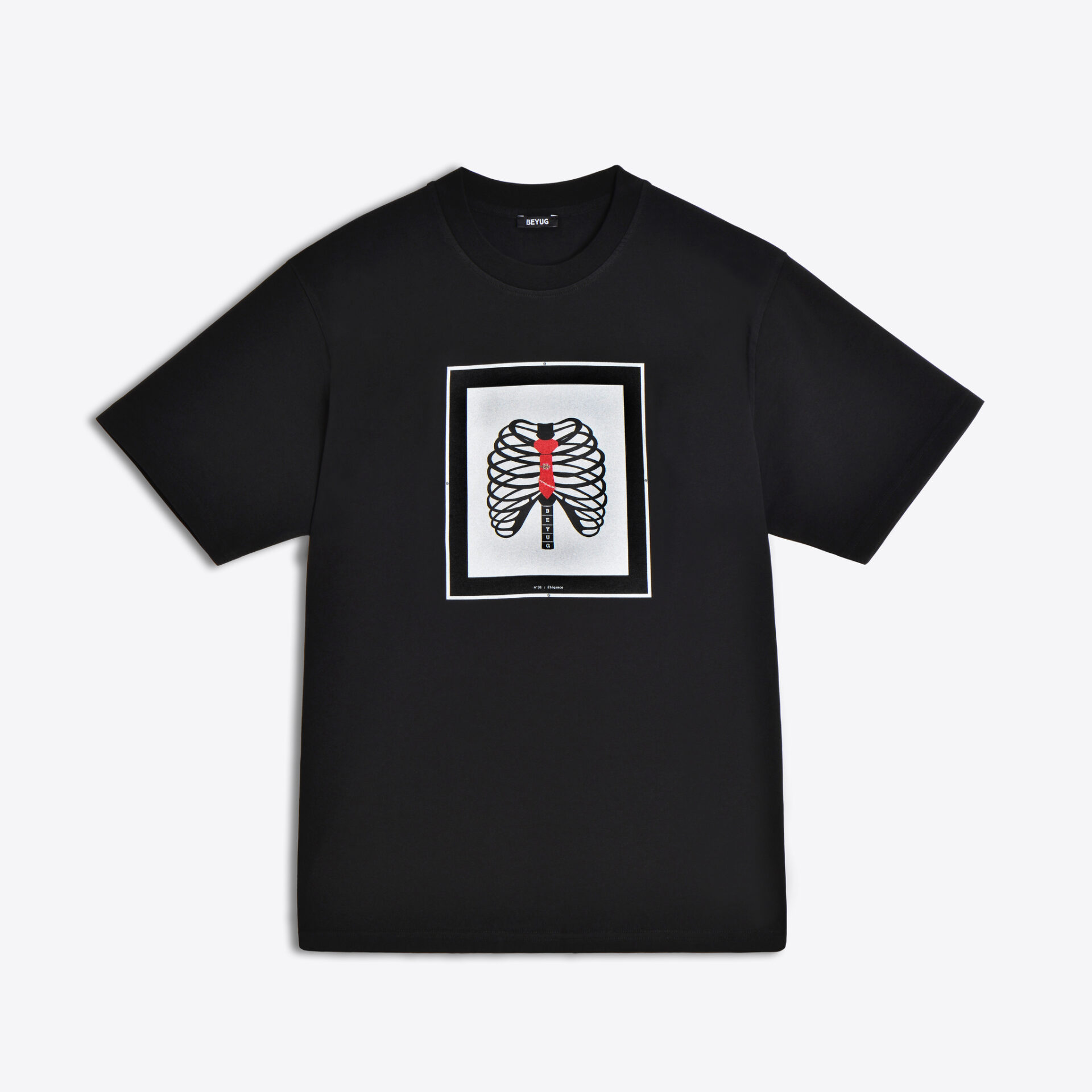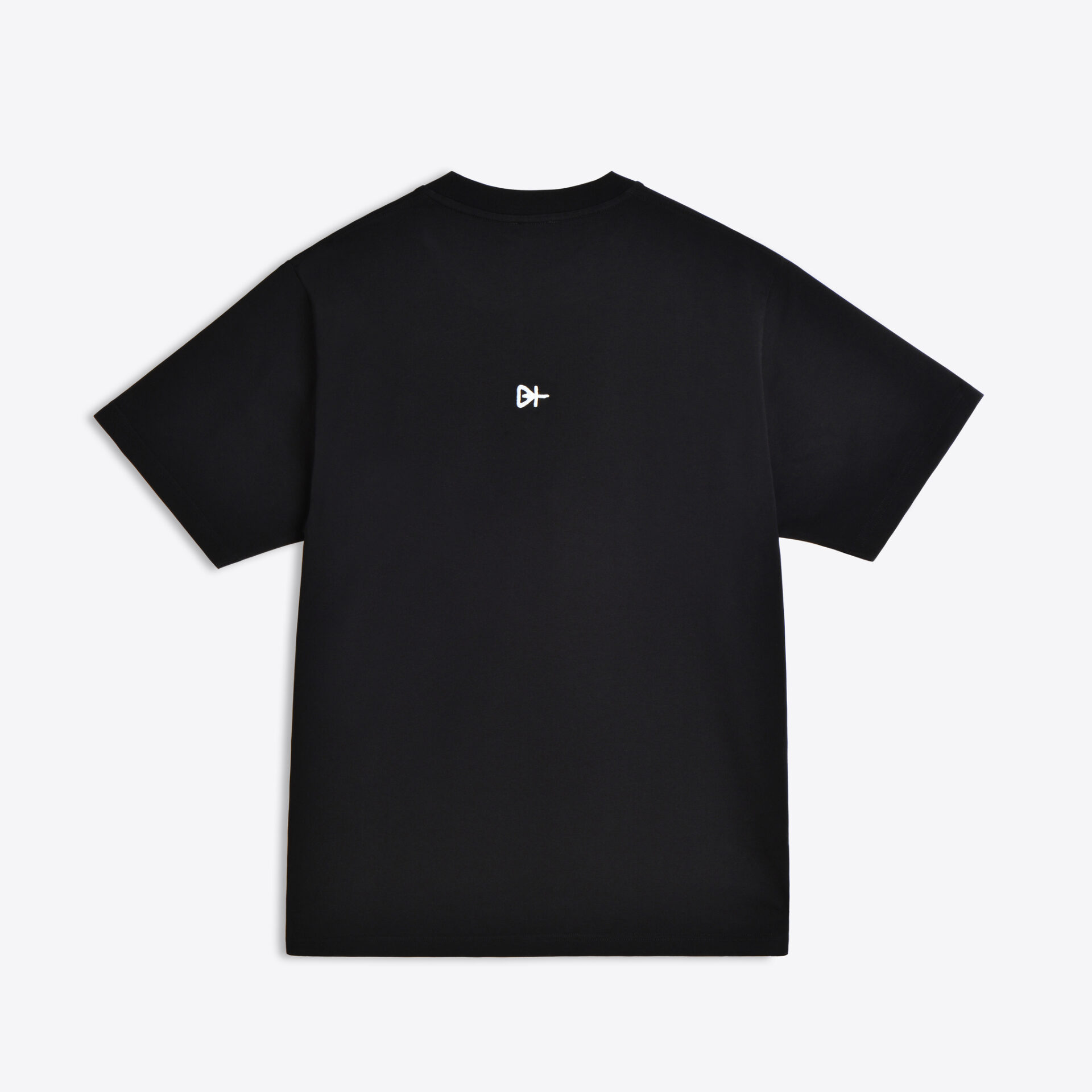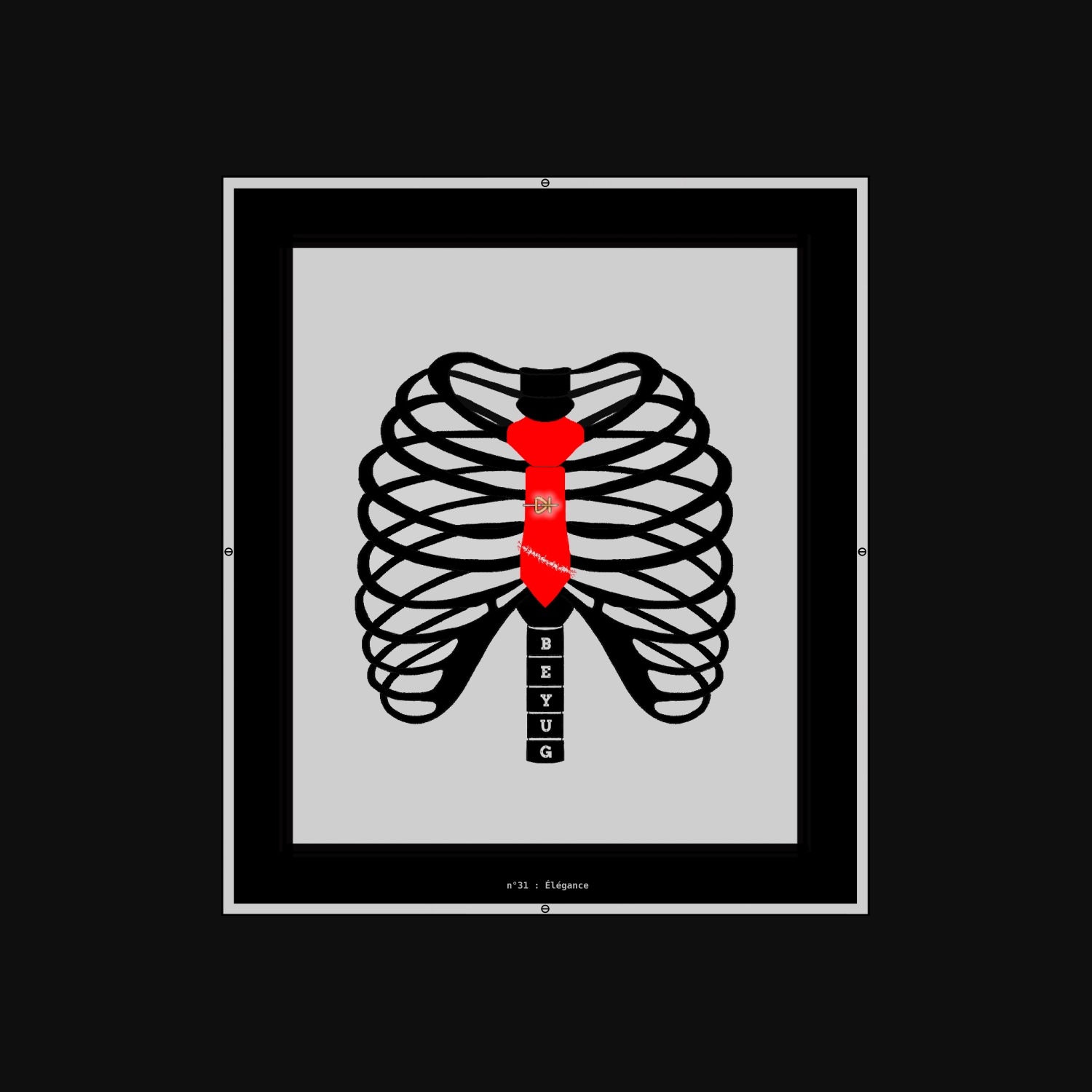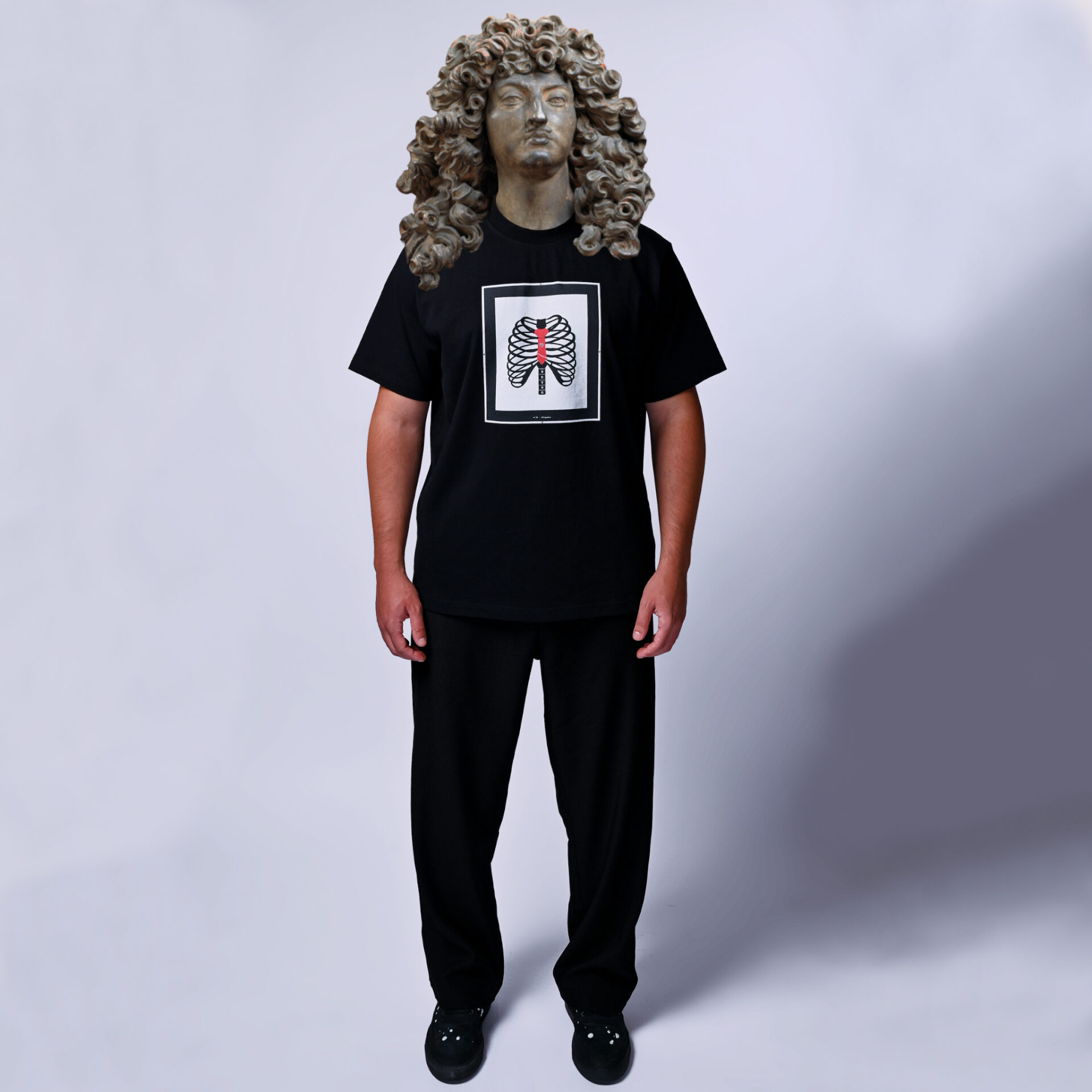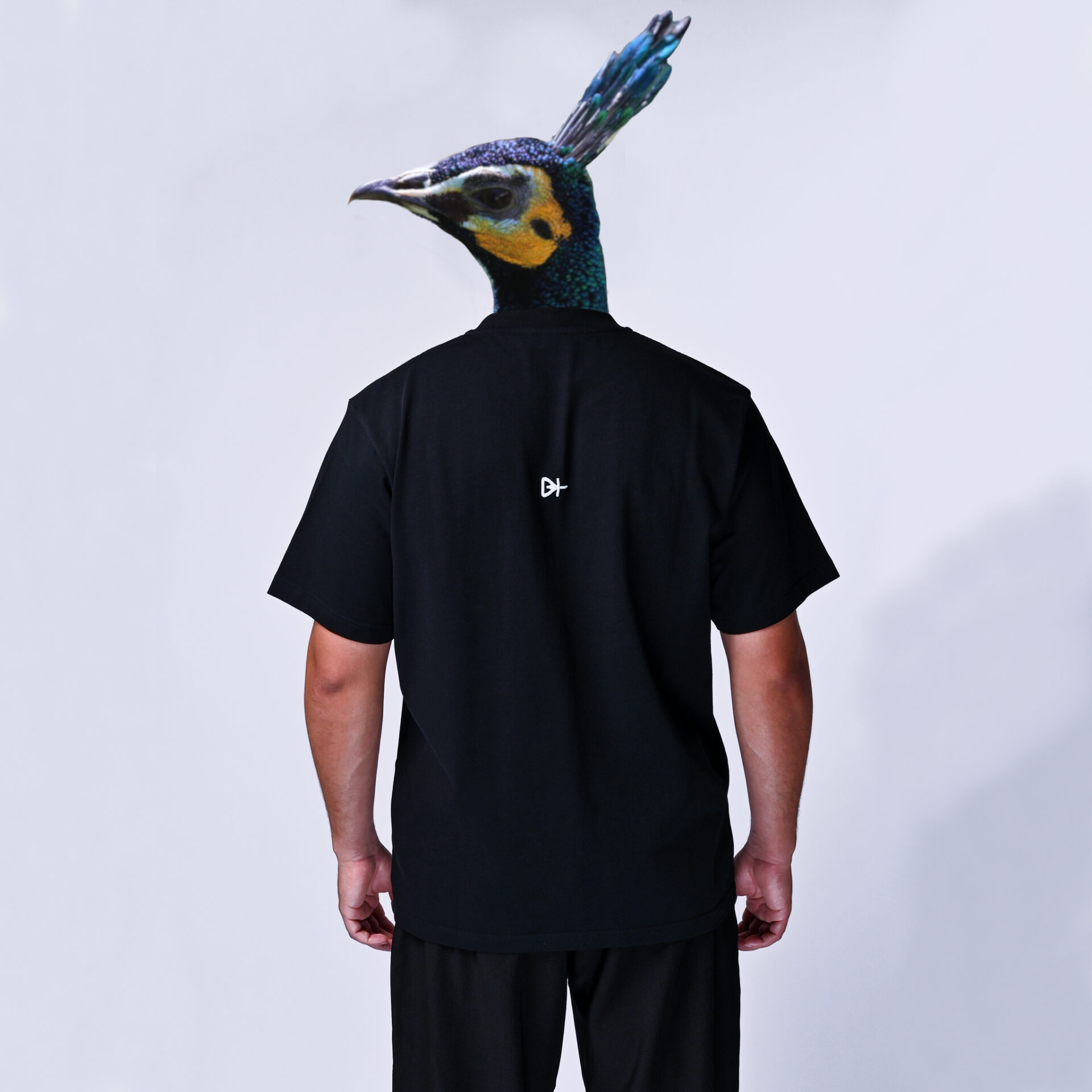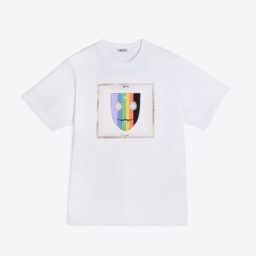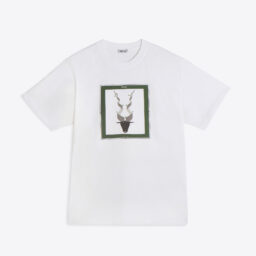Œuvre n°31 : Elegance
210€
Description
The number 31 refers to the expression "to put on its 31" which comes from the deformation of trentain, which, in the Middle Ages was a luxurious fabric composed of thirty times a hundred threads, as well as the Prussian soldiers who received the visit of their superior on the 31st of the month and had to be prepared for the occasion.
Elegance: distinction, refinement, grace in manners. From the Latin Elegantia "good taste", and from De elegans by definition "Who knows how to choose".
Let's look at the work. The idea is to inform, quoting Honoré de Balzac, on the loss of "the elegant life" whether in the way of dressing, the way of expressing oneself or the way of behaving.
Let's start with the clothing. The way of dressing loses its elegant value to the detriment of the vulgarity and the outfits put forward by the mass and the fashion effect.
The way of expressing oneself is severely affected by, among other things, a vocabulary in perdition and by a spelling that very often leaves something to be desired. The fault can be attributed to journalism, television and new technologies because words are lost through lack of communication and neglect of reading.
Finally, good behavior towards all beings is abandoned in favor of self-centeredness. Stress tends to reinforce this idea because we do not take the time to think about the other. We also notice a certain retreat of humanism and a loss of humanity by rejecting the other.
Product details :
- Model is 174cm, and wears M
- Fit relaxed, comfortable
- Composition 100% organic cotton
- Labels 100% recycled satin
- Weight 240g/m2
- Made in Portugal
Les tee-shirts peuvent contenir une marge d'erreur de longueur liée à la production de 0,5 à 1 cm.
Disposition longueur - largeur - manches
XS 67 cm - 50 cm - 21 cm
S 69 cm - 53 cm - 22 cm
M 71 cm - 56 cm - 23 cm
L 73 cm - 59 cm - 24 cm
XL 75 cm - 63 cm - 25 cm
Compléments d'informations
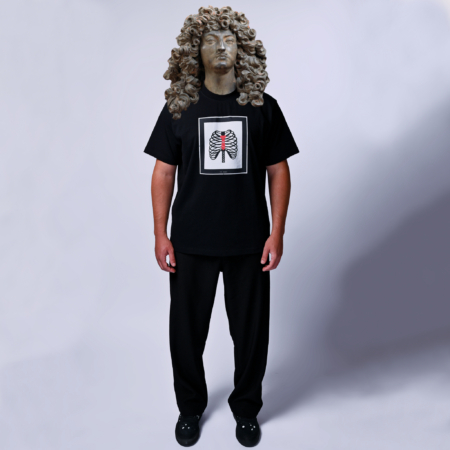
Tie, the history of the tie goes back to the Thirty Years' War (1618-1648) which opposed the German Empire to the Protestant German states. Louis XIII, king of France at the time, had a particular eye on fashion. It was during this war that he spotted the elegant Croatian soldiers wearing a knotted fabric around their necks. At that moment, the tie in its elegance was born. The word tie is derived from the Croatian word "hrvat".
It was taken over by Louis XIV who elevated it to the highest spheres by even creating the function of cravatier. The cravatier's duty is to choose and adjust the king's tie and to embellish it with accessories such as cufflinks.
The tie crosses the years and the centuries, knowing modifications of material, of shape, adorning several famous necks of which those of Diderot, Napoleon or Edouard VII. It will find its current modern appearance in the hands of Jesse Langsdorf, a New-York necktie maker in 1920.
Louis XIV, king of France 1638-1715

The peacock, living mainly in Asia, is now threatened with extinction due to deforestation of its habitat and illegal hunting. Once found in the wild in Thailand, Bangladesh and neighboring countries, it is now mainly found in Burma.
Jean Louis Leclerc, Count of Buffon said in the eighteenth century: "If the empire belonged to beauty and not to strength, the peacock would be without question the king of birds."
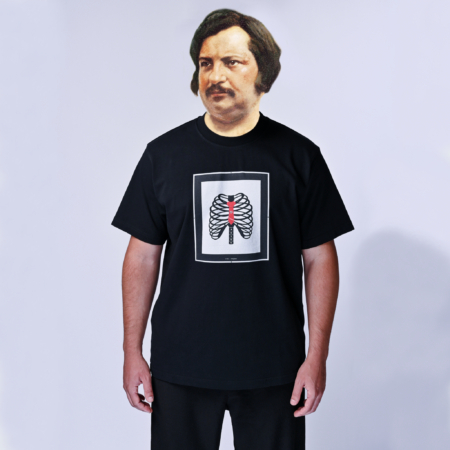
"The man who sees only fashion in fashion is a fool. The elegant life excludes neither thought nor science: it consecrates them"
Honoré de Balzac, writer 1799-1850
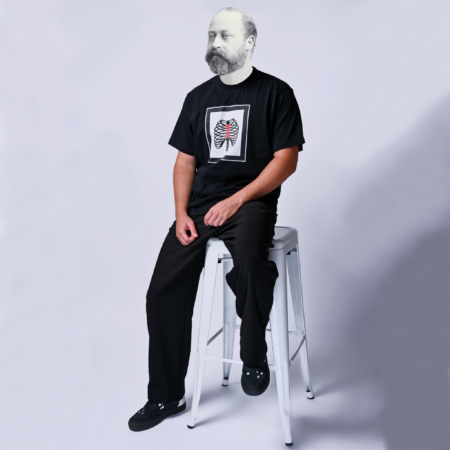
Smoking, in the 17th century the commercial exchanges between Europe and Asia multiplied thus bringing their batches of discoveries, among those, the banyan. It is an elegant Indian robe that laid the foundation stone for what would become the smoking.
During the 19th century, the banyan, often designed with noble materials, became the "smoking", a smoking garment that serves as a receptacle for cigarette odor and as protection against ashes.
During this period, Edward VII, the current Prince of Wales, asked the tailor's house Henry Pool & Co. to redesign the smoking to adapt it to everyday life. During a trip to America and a meeting between Edward VII, dressed in his new clothes, and James Brown Potter, a great businessman, the smoking, a ceremonial dress as we know it today, was born under the name tuxedo, name given by this businessman.
Edward VII, King of England 1841-1910
